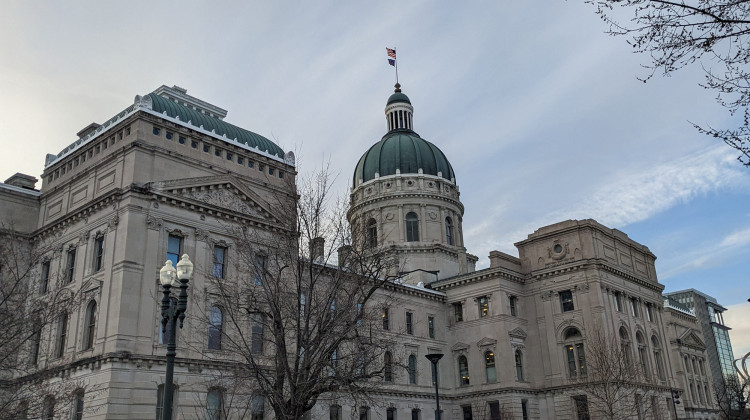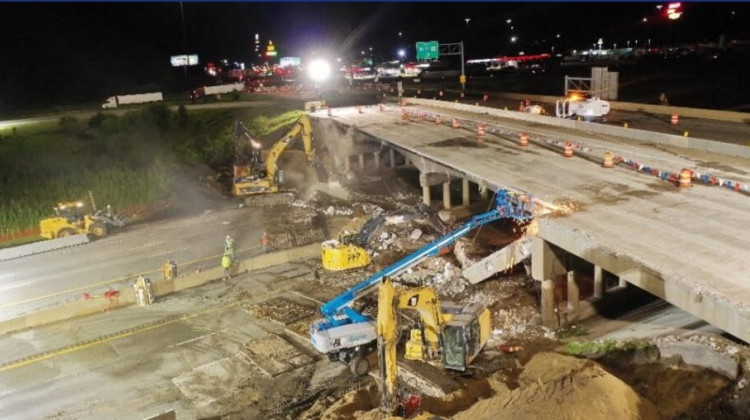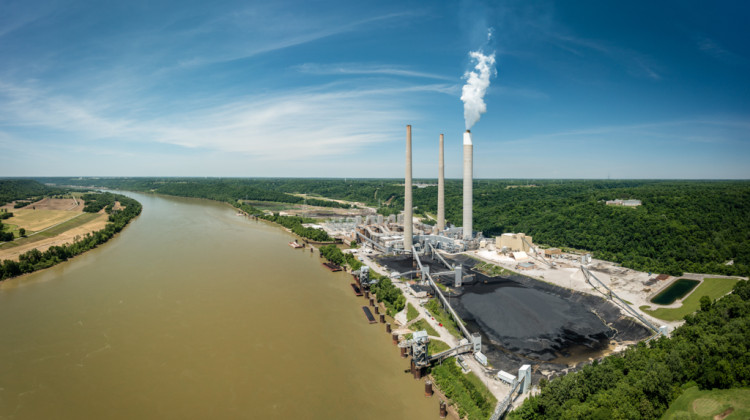
Cris Johnston, director of the Indiana Office of Management and Budget, said Indiana is pursuing grants for a regional hydrogen hub and existing programs for clean drinking water and lead remediation.
Lauren Chapman/IPB NewsUntil recently, Indiana received the second lowest amount of funding per person from the Inflation Reduction Act and the federal infrastructure law. That’s according to a report by Atlas Public Policy.
But the state could be catching up. As of last month, Indiana has secured more than $450 million or $66 dollars per person. About half of that came from a recent grant from the infrastructure law for a new lithium battery plant in Terre Haute.
While $66 per capita may sound like a lot, neighboring Kentucky and Michigan received about twice as much.
Annabelle Rosser is a senior policy analyst at Atlas Public Policy. She said it can be hard for some state agencies to find the staff time to apply for or implement this funding — and grant writing is a complicated process.
Fortunately, she said there are resources to help and there’s still time — only about one-fifth of the federal funding for climate programs has been awarded.
“So there's also still ample opportunity for communities in the state, state agencies to continue to take advantage of these funds," Rosser said.
Join the conversation and sign up for the Indiana Two-Way. Text "Indiana" to 73224. Your comments and questions in response to our weekly text help us find the answers you need on statewide issues, including this series on climate change and solutions.
Indiana was roughly in the middle of the pack when it came to the number of projects awarded grants.
Cris Johnston is the director of the Indiana Office of Management and Budget — which serves as the state’s point of contact for these grants and participates in monthly calls with the White House.
Johnston said these state rankings should be taken with a grain of salt. Indiana isn’t eligible for some of these grants and the numbers don’t always take into account grants Indiana cities have pursued on their own.
He said some grants simply aren’t worth pursuing. For example, if the total grant amount for the country is $100 million and it’s awarded based on population — Indiana would only see up to $2 million.
“We have to evaluate, ‘Is it really worth the time and effort to go after and pursue those opportunities?’” Johnston said.
Aside from the new battery plant, most of the federal dollars given to Indiana have gone toward modernizing transportation infrastructure like roads and bridges, cleaner school buses and cleaning up hazardous waste sites — including abandoned mines.
Johnston said Indiana is also pursuing grants for a regional hydrogen hub and existing programs for clean drinking water and lead remediation.
Rebecca is our energy and environment reporter. Contact her at rthiele@iu.edu or follow her on Twitter at @beckythiele.
9(MDAyMzk1MzA4MDE2MjY3OTY1MjM5ZDJjYQ000))
 DONATE
DONATE






 Support WFYI. We can't do it without you.
Support WFYI. We can't do it without you.